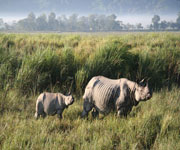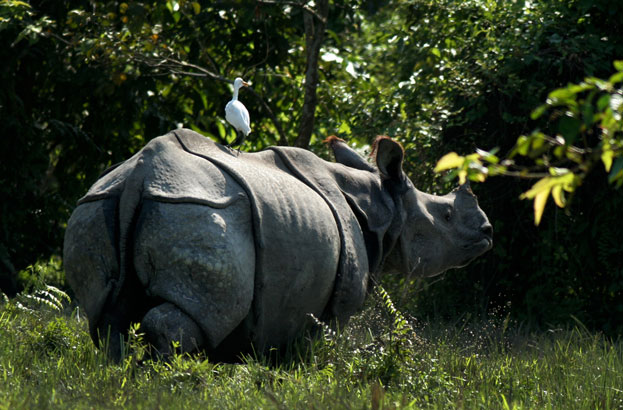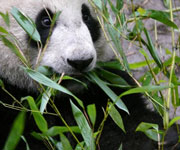Kaziranga National Park India
In the heart of Assam, Kaziranga National Park is one of the last areas in eastern India undisturbed by a human presence. It is inhabited by the world's largest population of one-horned rhinoceroses, as well as many mammals, including tigers, elephants, panthers and bears, and thousands of birds. In the heart of Assam, this park is one of the last areas in eastern India undisturbed by a human presence. It is inhabited by the world's largest population of one-horned rhinoceroses, as well as many mammals, including tigers, elephants, panthers and bears, and thousands of birds.

Continent: Asia
Country: India
Category: Natural
Criterion: (II)(IV)
Date of Inscription: 2011
The Water Coverage of Kaziranga
The site is on the southern bank of the Brahmaputra River at the foot of the Mikir Hills. The park lies in the flood plains of the Brahmaputra. The riverine habitat consists primarily of tall, dense grasslands interspersed with open forests, interconnecting streams and numerous small lakes (bheels). Three-quarters or more of the area is submerged annually by the flood waters of the Brahmaputra. Soils are alluvial deposits of the Brahmaputra and its tributaries.
There are three main types of vegetation: alluvial inundated grasslands, tropical wet evergreen forests and tropical semi-evergreen forests. Grasslands predominate in the west, with tall 'elephant' grasses on the higher ground and short grasses on the lower ground surrounding the bheels. They have been maintained by annual flooding and burning over thousands of years. Tropical wet evergreen forests, near Kanchanjhuri, Panbari and Tamulipathar blocks, are dominated by trees. Tropical semi-evergreen forests occur near Baguri, Bimali and Haldibari.



